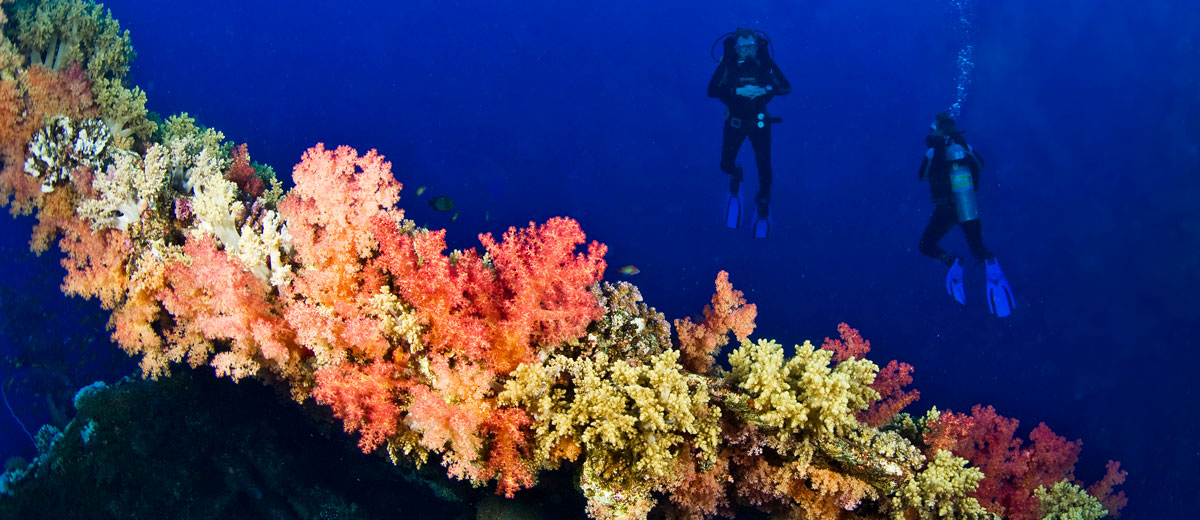
To halt the loss of biodiversity by 2020 effective and urgent action is required, equating to between US$20 and US$60 per capita globally. So far the actual amount invested in biodiversity has been a meagre 0.002 % of global GDP, a new study shows. Photo: B. Christensen/Azote
Bildtext får vara max två rader text. Hela texten ska högerjusteras om den bara ska innehålla fotobyline! Photo: B. Christensen/Azote
BIODIVERSITY CONSERVATION
Investing in nature outweigh costs
New paper shows why investments to reverse biodiversity loss are economically beneficial
• The benefits of investing to meet the Aichi Biodiversity Targets far outweigh the costs
• Currently only around 0.002 % of global GDP is invested on the conservation of biodiversity. Approximately four times the current level of investment is required to meet conservation needs
• Extensive capacity building is needed to better manage biodiversity
In 2010, all 193 countries that are Parties to the Convention on Biological Diversity (CBD) agreed on a plan to take effective and urgent action to halt the loss of biodiversity by 2020. The aim was to ensure that ecosystems are resilient and continue to provide essential services contributing to human well-being and poverty eradication, as well as, securing the planet’s variety of life.
In an article recently published in Current Opinion in Environmental Sustainability researchers conclude that there is still much work to be done.
Fourfold increase needed
The study of the High-level Panel on Global Assessment of Resources for Implementing the Strategic Plan 2011-2020 shows that considerable investment is required, equating to between US$20 and US$60 per capita globally. So far the actual amount invested in biodiversity has been a meagre 0.002 % of global GDP. This means investment has to be increased fourfold in order to meet conservation needs.
The investment needed is undoubtedly high, but a key conclusion is that the monetary and non-monetary benefits of biodiversity conservation and sustainable use to be achieved by implementing the Aichi Biodiversity Targets would significantly outweigh the cost
Dr Rashid Sumaila, University of British Columbia, member of the High-level Panel and lead author of the paper
Effective policies and instruments
Furthermore, while increased international investment through overseas development aid and philanthropic donations is needed, there is also a need for countries to develop effective policies and instruments, such as through incentive reforms, which support increased investment, including extensive capacity building to better manage biodiversity and increasing domestic mobilisation of biodiversity finance.
"Investments should be made in improved knowledge generation regarding the insurance value of biodiversity and better learning processes for adaptive governance of ecosystems to avoid dangerous tipping points and regime shifts," says Maria Schultz, Director of SwedBio (currently on leave). She was also a member of the High-level Panel.
"Investing in biodiversity can effectively reduce national and community vulnerability, increase resilience and aid adaptation to climate-related impacts at all scales, and contribute significantly to addressing climate change”, says Tristan Tyrrell, Programme Officer at SwedBio and former Manager of the High-level Panel at the CBD Secretariat.
Sumaila, R., Rodriguez, C.M., Schultz, M., Sharma, R., Tyrrell, T.D., Masundire, H., Damodaran, A., Bellot Rojas, M., Rosales, R.M.P., Jung, T.Y., Hickey, V., Solhaug, T., Vause, J., Ervin, J., Smith, S. & Rayment, M. 2017. Investments to reverse biodiversity loss are economically beneficial. Current Opinion in Environmental Sustainability 29: 82-88.
Maria Schultz is the director of SwedBio, a knowledge interface at Stockholm Resilience Centre that enables knowledge generation, dialogue, and exchange between practitioners, policymakers, and scientists for development and implementation of policies and methods at multiple scales.
Tristan Tyrrell's work focuses primarily on biodiversity, ecosystem services and resilience their role in poverty reduction. In particular he examins ecosystem-based solutions for climate change and sustainable development. This includes tracking and contributing to international policy related processed such as UNFCCC, CBD, IPBES, SDGs and others.







